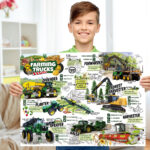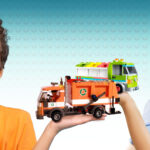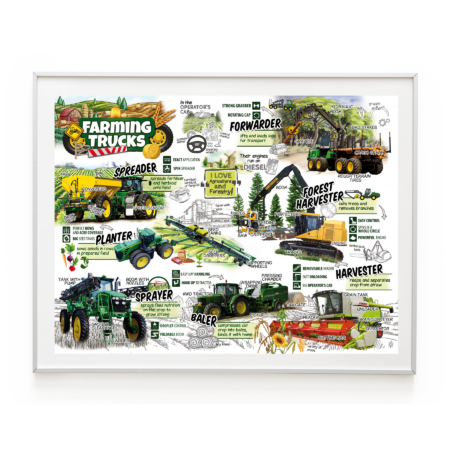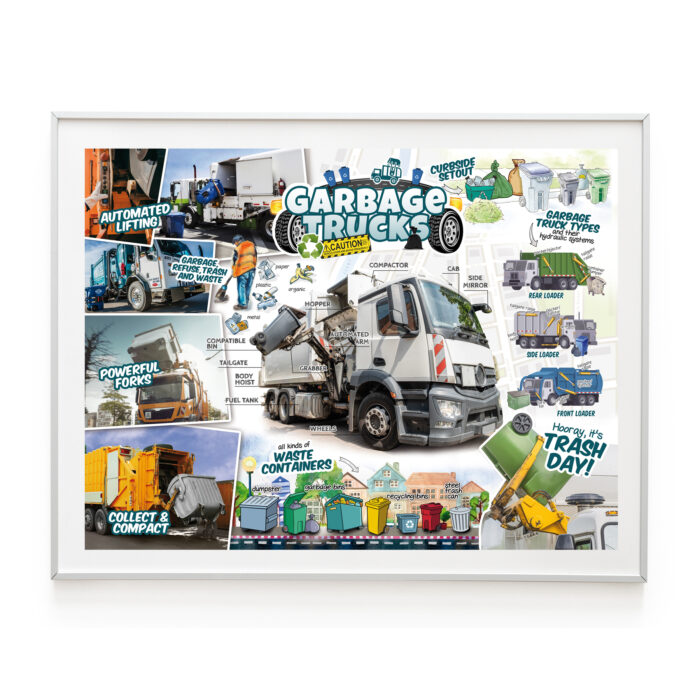Your cart is currently empty!
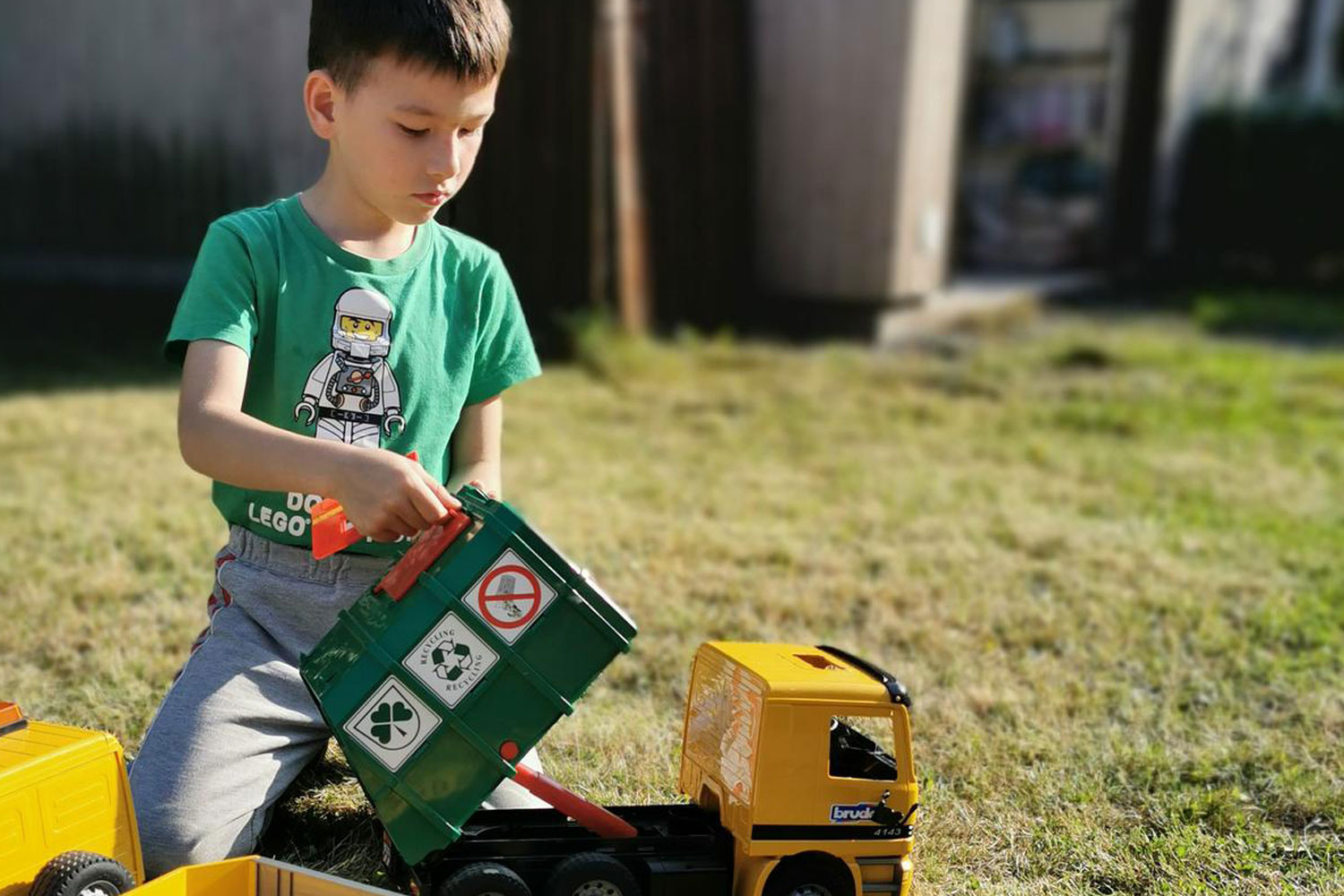
5 Reasons Why Your Kids Love Garbage Trucks

https://www.linkedin.com/pulse/5-reasons-why-your-kids-love-garbage-trucks-john-woolf/
John Woolf
Professional Writer | SEO Content Creator | Marketing Specialist | Animal Advocate
January 31, 2023
Loud, Large and Loaded; the Psychology Behind Your Children’s Fascination with these Unique Vehicles
What’s Coming Down the Road?
Behavioral science is a discipline that deals with the “why’s” of human actions. Do you ever wonder why kids rush outside to see the family’s weekly waste disappear? Scientific studies can help us understand the Psyc behind it. But can the sheer cold facts explain everything? After all, behavioral studies can teach us much about the human condition, but the heart’s actions aren’t easily mapped with genomes when it comes to the big white truck rumbling down your road.
This blog will examine what social science studies can teach us about this interesting phenomenon. It seems incongruous — children filled with excitement over trash pickup. But behavioral research gives clues to what’s happening in a child’s brain when the big wheels roll their way.
Object Permanence and Garbage Collection Trucks
Like household pets, humans love routine. Eat dinner at this time. Drive to work this way. Drink this much water today. Routine, habit, we eat it up. It doesn’t mean we’re stuck in a rut. Instead, it helps us make sense of our world. Orderliness is a wonderful friend — a comfort when all else is chaos. Adults see it as the daily grind but let something, even something good, interfere with our routine, and we feel anxious. Maybe worse.
Now imagine being a child and experiencing an unexpected change. The mental construct is called object permanence. It develops in a child’s brain between four and nine months. For unsuspecting parents, it can be a shock almost as much as it is for the child. Object permanence refers to the understanding that some things go away and never come back — while others do. A child doesn’t necessarily know her mother leaving the room is temporary. When she comes back to check on her repeatedly, the child relaxes and begins to understand.
As your child grows, the brain increasingly grasps how things work in their world. The “norm” is established. Let’s apply this and assume the trash pickup in your neighborhood is Thursday. Every Wednesday night after dinner, your child watches — and eventually helps — put the trash on the curb. And every Thursday morning, the loud and large Kimble truck pulls up, and the Transformer-like arms pick up your carts, turn them over and replace them. And this happens Thursday, then Thursday, then Thursday.
- Every Thursday
- Routine Builds
- Object Permanence Interprets
- Order Established
A sense of security surrounds us when everything is as it should be. And when it is, a child feels safe, which is a rewarding part of their neural growth. Safety and a sense of well-being are essential to a child’s developing psyche.
Living Loud and Large
Garbage trucks, cargo trucks, fire engines: what do they have in common? They’re big, bright, loud and exude power. Kids often feel powerless in a world ruled by larger people. So, it’s natural for them to want to be older, larger and have the power to control their own lives.
Enter the imagination. Kids have an innate coping mechanism: through flights of fancy, they can upload themselves into adult roles to the point of incredible adventures. They enjoy the playtime adults abandoned for the “real world” long ago. Doing so allows them to feel powerful and in control of their environment.
Human beings, by nature, feel small and insecure in a vast universe. Children experience that infinitely more. So, it’s a natural fascination for them to imagine a world full of machines, bright colors, and loud, crunching and breaking noises. Seeing and hearing those in action fuels their burgeoning spirit. Watching and waving to the drivers of these massive vehicles, who operate multiple levers and buttons, helps insert them into the world they wish to join.
Mine, Mine, Mine
I still remember Yoda yelling this at R2-D2 in Star Wars: The Empire Strikes Back. He’d taken a small lamp from a case that the robot was trying to take back. So, Yoda — Jedi Master — kept hitting R2 with his walking stick, trying to get him to release it. SPOILER ALERT: Yoda keeps the lamp and throws in one last hit just to be petty. But I digress. Behavioral science studies could have a field day with this, but there is a lesson here for our purposes. Ownership of something gives us a measure of control or power over it, even if that “something” isn’t tangible.
Kids love their stuffed animals, dolls, Hot Wheels, video games, etc. Why? Aside from the fact they’re fun and provide fodder for their imaginations, they give a sense of ownership — a piece of this world that’s theirs. This ownership is a huge thing for the small, who are often overlooked or excluded from activities or objects; it gives them something, anything, that’s exclusively theirs.
A child who watches through the window to see the garbage truck come to their house and pick up their trash and replace it on their curb may begin to think of the truck and its driver as their own. Do you see a pattern here?
Throw in a wave or a smile from the child to the driver and back, and they’re hooked. Collecting the family’s waste is seen as a unique, personal interaction with them. The sphere of influence for that child is small, so the concept that this particular truck picks up from a thousand homes doesn’t register. Anything else, like a wave and a smile from the driver in the bright vest, is icing on the cake.
Social Science? No, Bring On the Eye Candy
Social science research is collected on a multitude of levels. But sometimes, adults need to sit down, catch their breath and let childlike joy take center stage. Consider the average front-loader waste collection truck. We’ve established how enormous they are and how a child can view them as awe-inspiring. But there’s more to it. They’re unusual in the extreme.
A child rides in the family vehicle(s), plays video games and watches TV. Still, when these behemoths blow off the air brakes, and those hydraulic arms reach out to grab the waste cart, the visual effect is so skewed from the mundane that it captivates a young mind. It can feel to them like seeing a movie in front of their house.
And to many children, a vehicle is a living creature with eye-like headlights and a mouth-like grille. They care about it and consider it a family friend or see the garbage truck as a noisy beast coming to devour their trash. They can imagine interacting with it on the desert plains or arctic tundra. It’s enough to mesmerize a young mind. They may even name the truck as they do many of their toys and decide it’s part of their family.
Stop That!
Children are under the supervision of older adults, whether parents or guardians. As such, they live in a world of rules. “Stop that! Be quiet! Don’t touch that!” Hopefully said in more dulcet tones with gentler words, but you get my point. Kids don’t make the rules. They’re taught to observe them, often without clarity of cause.
But a garbage truck breaks those rules and gets away with it every time. The loud noises, the breaking glassware and the sheer size, defy the regulations they must observe. But a garbage truck disregards those regulations and gets away with it every time. There’s a catharsis here for the rule observer. Broken trash and broken rules can be very exciting.
Conclusive Conclusion
Taking stock of what we’ve learned:
- Object Permanence provides a sense of security and safety, and the regular arrival of the garbage truck helps enforce this.
- Loud and large garbage trucks allow kids’ imaginations room to grow as they see themselves in the driver’s seat or riding the back and holding on.
- Taking ownership of their world, kids accept the truck, and sometimes the driver, as a part of the universe they control.
- Children’s minds are limitless; they can see a garbage truck as a living thing with exciting bells and whistles.
- Rules were made to be broken — if only by enormous vehicles like the garbage truck. With loud noises and the breaking of waste items, they defy the law — in a child’s mind, at least.
Social research tells us that all these experiences were meant to be lived and felt and become part of the fabric of our humanity. Psychology would point to the brain and its functions and growth, while behavioral studies carry a clipboard everywhere and check off the markers of a child’s development.
Kids just say, “I love garbage trucks! They rule!”

